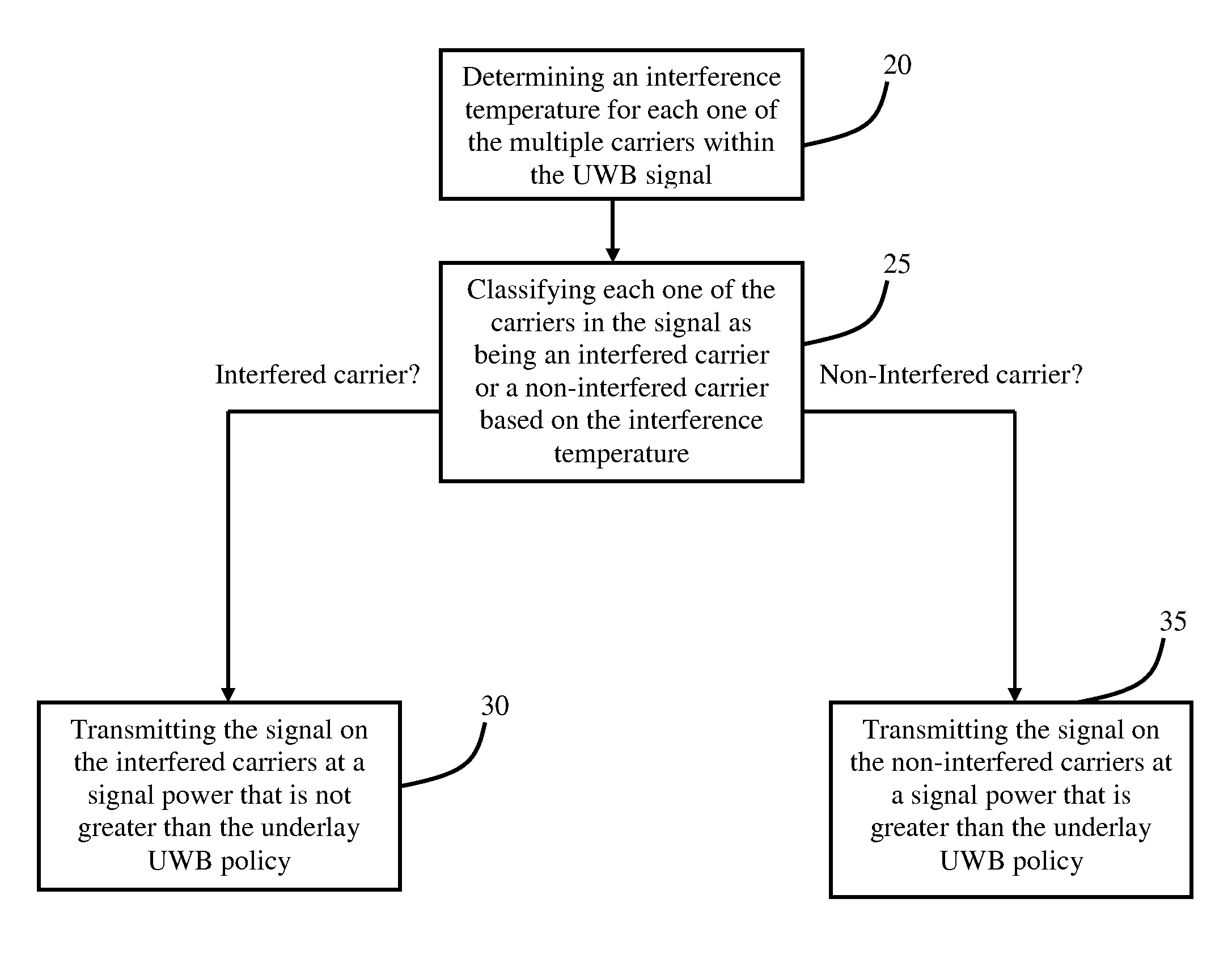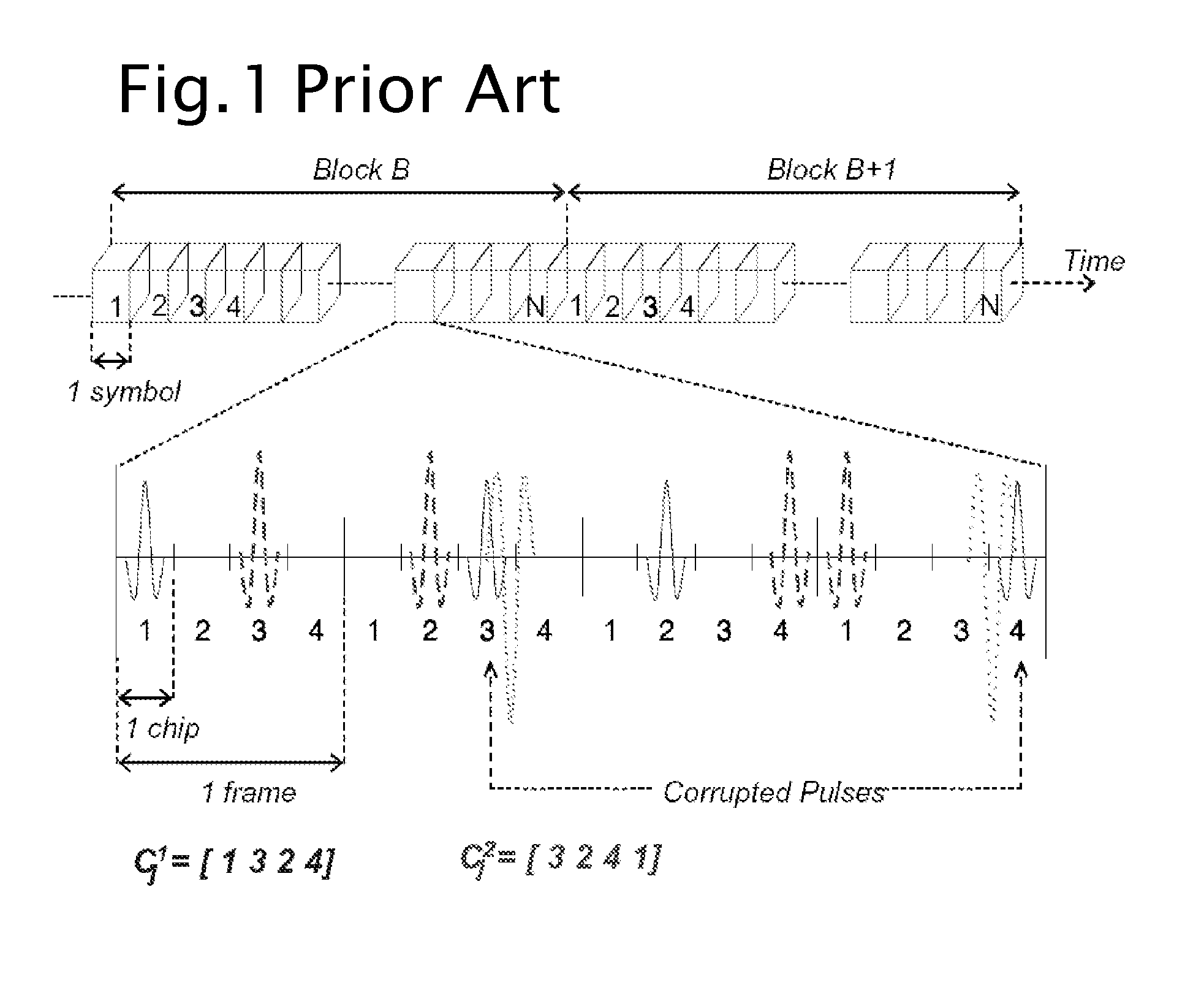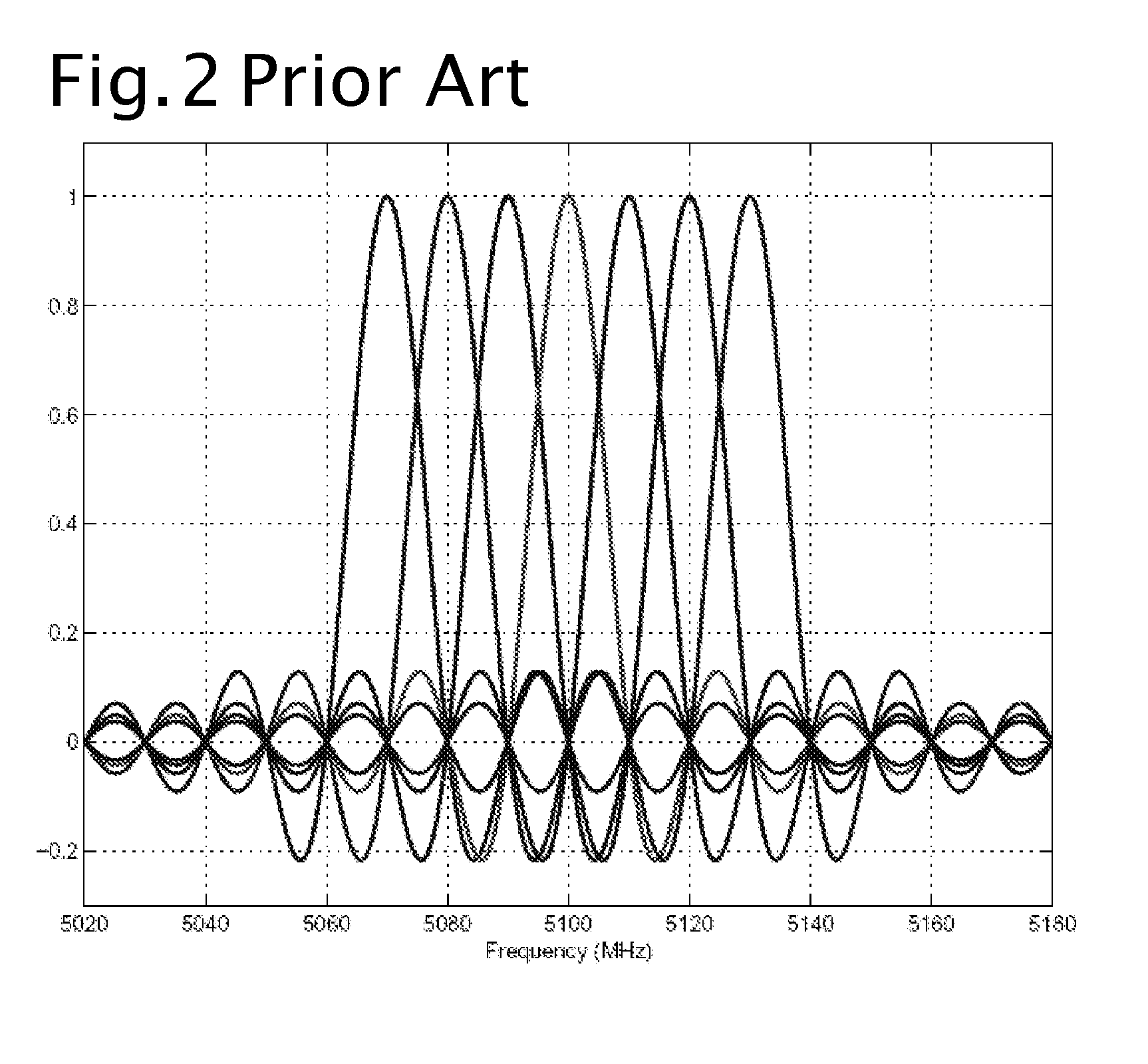Cognitive Ultrawideband-Orthogonal Frequency Division Multiplexing
a wideband orthogonal frequency and multiplexing technology, applied in orthogonal multiplexing, digital transmission, electrical equipment, etc., can solve problems such as inter-carrier interference, and achieve the effects of reducing inter-carrier interference, limiting sidelobes, and reducing interference within multiple carriers
- Summary
- Abstract
- Description
- Claims
- Application Information
AI Technical Summary
Benefits of technology
Problems solved by technology
Method used
Image
Examples
Embodiment Construction
[0029] In implementing a UWB system, resistance to narrowband interference (NBI) is one of the main concerns. The need for resistance to narrowband interference provides a strong motivation for employing OFDM in UWB applications. Along with its resistance against NBI, OFDM has the ability to turn the transmission on and off on separate carriers depending on the level of interference temperature. A common NBI model considered for OFDM is a zero-mean Gaussian random process that occupies certain carriers along with the white noise as: Sn(k)={Ni+Nw2,if k1kk2Nw2,otherwise
[0030] where k is the carrier index, and Ni / 2 and Nw / 2 are the power spectral densities of the narrowband interferer and the white noise, respectively. In OFDM based UWB, NBI can be avoided by an adaptive OFDM system design. As the simple interference scenario illustrated in FIG. 4 shows, NBI 10 will corrupt only some carriers 15 in OFDM spectrum. Therefore, only the information that is transmitted over these freque...
PUM
 Login to View More
Login to View More Abstract
Description
Claims
Application Information
 Login to View More
Login to View More - R&D
- Intellectual Property
- Life Sciences
- Materials
- Tech Scout
- Unparalleled Data Quality
- Higher Quality Content
- 60% Fewer Hallucinations
Browse by: Latest US Patents, China's latest patents, Technical Efficacy Thesaurus, Application Domain, Technology Topic, Popular Technical Reports.
© 2025 PatSnap. All rights reserved.Legal|Privacy policy|Modern Slavery Act Transparency Statement|Sitemap|About US| Contact US: help@patsnap.com



